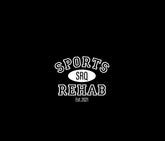Unlocking the Frozen Shoulder: Evidence-Based Strategies for Optimal Recovery
Let’s dive into one of the most frustrating conditions you can experience: frozen shoulder. If you've ever found yourself feeling trapped, limited, and longing for pain-free movement, this blog post is for you. Today, I'll share evidence-based strategies that will help you thaw out that frozen shoulder and reclaim your active lifestyle. So, let's jump right in!
Understanding Frozen Shoulder:
Frozen shoulder, clinically known as adhesive capsulitis, is a condition characterized by pain, stiffness, and limited range of motion in the shoulder joint. While the exact cause remains elusive, certain factors such as age, diabetes, previous shoulder injury, and hormonal imbalances may increase the risk.
-
Gentle and Gradual Movement:
Contrary to popular belief, immobilizing the shoulder joint will not aid recovery. Instead, it's crucial to keep the joint moving, albeit gently. Gradually increasing the range of motion helps prevent further stiffness and promotes healing. Performing Controlled Articular Rotation (CARs) exercises, assisted range-of-motion exercises, and self-assisted stretching can all be effective in this regard.
-
Manual Therapy:
The skilled hands of a physical therapist can work wonders in treating frozen shoulder. Techniques such as joint mobilizations, soft tissue mobilization, and myofascial release can help break up adhesions, improve blood flow, and reduce pain. Seek the guidance of a licensed physical therapist who specializes in shoulder rehabilitation to ensure optimal results.
-
Therapeutic Exercise:
Incorporating evidence-based therapeutic exercises into your treatment plan can significantly improve your frozen shoulder. Strengthening the rotator cuff muscles, deltoids, and scapular stabilizers can help restore stability and enhance range of motion. Examples of effective exercises include external rotation with resistance bands, wall slides, and scapular stabilization exercises.
-
Modalities for Pain Relief:
When it comes to managing the pain associated with frozen shoulder, several evidence-based modalities can offer much-needed relief. Modalities such as dry-needling, transcutaneous electrical nerve stimulation (TENS), and low-level laser therapy have shown promising results in reducing pain and promoting tissue healing. However, it's important to consult with a healthcare professional to determine the most appropriate modality for your specific condition.
-
Patient Education and Self-Care:
Empowering patients with knowledge and self-care practices is a vital component of frozen shoulder treatment. Educating individuals about their condition, providing ergonomic advice, and teaching proper posture and body mechanics can prevent further aggravation and promote long-term recovery. Additionally, implementing heat or cold therapy, practicing stress management techniques, and ensuring adequate rest and sleep can all contribute to a holistic healing approach.
Conclusion:
There you have it, folks! By adopting these evidence-based strategies, you'll be well on your way to thawing out that frozen shoulder and regaining your active, pain-free lifestyle. Remember, every individual's journey is unique, so it's important to consult with a qualified healthcare professional for a personalized treatment plan.
At SRQ Sports Rehab, we're passionate about helping you overcome obstacles and achieve optimal musculoskeletal health. We are well-versed in evidence-based practices for frozen shoulder treatment. Don't let a frozen shoulder keep you on the sidelines—reach out to us today and let us guide you towards recovery!
Dr. Regi Bastien
References:
-
Kelley MJ, Shaffer MA, Kuhn JE, et al. Shoulder pain and mobility deficits: adhesive capsulitis. J Orthop Sports Phys Ther. 2013;43(5):A1-31. doi:10.2519/jospt.2013.0302
-
Page P, Labbe A.

